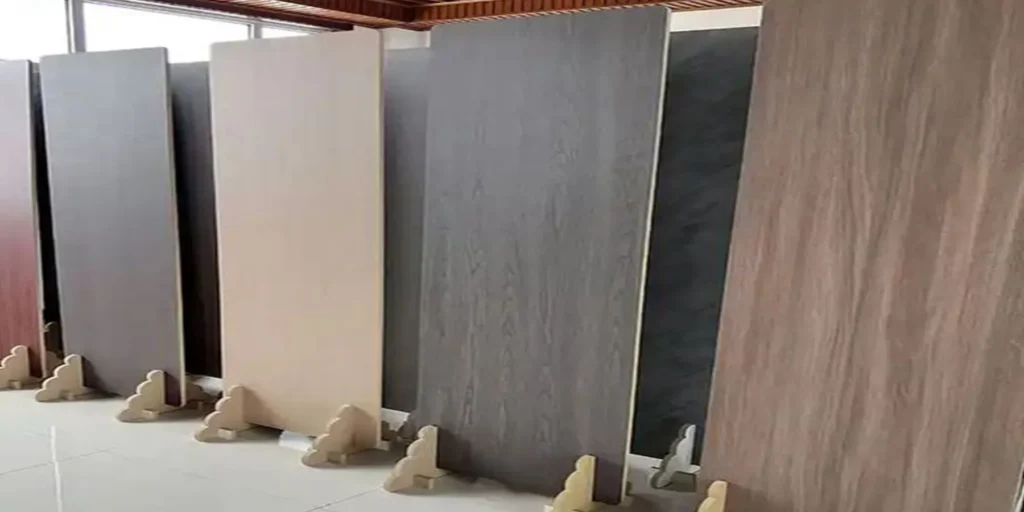When planning to build kitchen cabinets, choosing the right material is essential for both aesthetics and functionality. While solid wood is often considered the gold standard, it can be prohibitively expensive. This leads many DIY enthusiasts to consider two popular alternatives: melamine boards and MDF (medium-density fibreboard). Here’s a breakdown of their key differences and unique advantages.

What is MDF?
MDF is an engineered wood product made from wood fibers, glue, and pressure, resulting in a smooth, consistent surface that lacks the natural grain of solid wood. It’s available in various types, including moisture-resistant and fire-retardant options.
Benefits of Using MDF for Kitchen Cabinets:
- Budget-Friendly: MDF is significantly cheaper than solid wood or plywood, making it an economical choice for kitchen cabinets.
- Strength and Durability: MDF is strong enough to support the weight of kitchen equipment without sagging or collapsing.
- Sustainability: Made from recycled and waste wood, MDF is an eco-friendly option for your projects.
- Ideal for Painting: Its smooth surface makes it perfect for a painted finish, allowing for a clean and polished look.
- Versatility: MDF can be used as both the visible outer layer and the internal structure of furniture, providing great flexibility in design.
Considerations for MDF:
- Scratch Vulnerability: MDF is less scratch-resistant than melamine. Chips may expose the wood fibers beneath the paint.
- Health Concerns: MDF contains formaldehyde particles; therefore, safety precautions are necessary when cutting or sanding.
- Moisture Sensitivity: Regular MDF is unsuitable for humid environments, so moisture-resistant variants should be used in kitchens or bathrooms.
- Difficulty with Fastening: Screwing into MDF requires care, such as using pilot holes to avoid damaging the board.
What are Melamine Boards?
Melamine boards consist of an engineered wood core, such as chipboard or MDF, with a thin layer of melamine resin applied to the surface. This resin comes in various colors and finishes, making melamine boards an attractive option for cabinetry.
Benefits of Using Melamine Boards for Kitchen Cabinets:
- Aesthetic Appeal: Melamine boards are available in a wide range of colors and finishes, including options that mimic natural wood or stone.
- Durability: They are highly resistant to scratches, stains, and moisture, making them ideal for the demanding kitchen environment.
- Cost-Effectiveness: Like MDF, melamine boards are significantly cheaper than solid wood, offering a stylish appearance at a fraction of the cost.
- Easy Maintenance: The smooth surface is easy to clean, ensuring that kitchen spills and stains can be quickly wiped away.
Considerations for Melamine Boards:
- Edging Requirements: While the surface is waterproof, the edges must be sealed with edgebanding to prevent moisture infiltration.
- Material Strength: The overall strength of melamine boards is contingent on the type of core used (MDF, particleboard, or plywood).
- Environmental Impact: The use of plastic veneers in melamine boards can make them less eco-friendly compared to MDF.
Conclusion: Melamine vs. MDF
The choice between melamine and MDF for kitchen cabinets largely depends on your design preferences, budget, and specific needs. Melamine boards offer a wide variety of finishes and are more resilient to daily wear, making them suitable for modern kitchens. On the other hand, MDF provides a smooth, paintable surface at a lower cost, ideal for custom designs.
Ultimately, whether you opt for pure MDF or a melamine-faced variant, both materials have their own advantages. At MASEN, you can find a comprehensive range of materials, along with cut-to-size and edgebanding services, to help you embark on your kitchen project with confidence.
